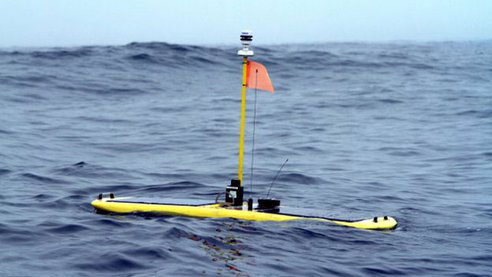Ocean explorers have used robots to inspect underwater pipelines, search for treasure, and even explore inside the wreck of the Titanic. Now Liquid Robotics, a company located in Sunnyvale, California, has built robots to travel across the surface of the ocean.
Last November, Liquid Robotics launched four of their wave gliders in the Pacific ocean. The autonomous robots – outfitted with sensors that measure and collect information on a variety of substances, from oil spills to salinity levels to weather information – are wave-powered, using the rolling motion of the water to propel forward. Traveling at an average speed of just 1.5 knots, it’s a slow trek, and one wave glider, named “Papa Mau” completed a 9,000 nautical mile trop across the Pacific, setting a world record for the longest autonomous trip.
A press release from Liquid Robotics states, “During Papa Mau’s journey, he weathered gale force storms, fended off sharks, spent more than 365 days at sea, skirted around the Great Barrier Reef, and finally battled and surfed the East Australian Current (EAC) to reach his final destination in Hervey Bay near Bundaberg, Queensland, Australia. He traveled through and measured over 1200 miles of a chlorophyll bloom along the Equatorial Pacific. These blooms indicate proliferation of phytoplankton that is fundamental to ocean life and climate regulation. While typically monitored through satellite imagery direct validation of chlorophyll blooms at this resolution provides a groundbreaking link between scientific modeling and in-situ measurement of the Pacific Ocean.”
As Fast Company notes, “The Wave Glider is currently being used for up to 60 different applications, including helping ships reduce fuel consumption, measuring carbon output, helping wit fishery management, and oil and gas exploration… [T]he Wave Glider can detect oil spills in remote places where they might otherwise have gone unnoticed for too long. With so many capabilities, it’s no surprise that Wave Gliders are used by organizations as varied as BP and NOAA.”

